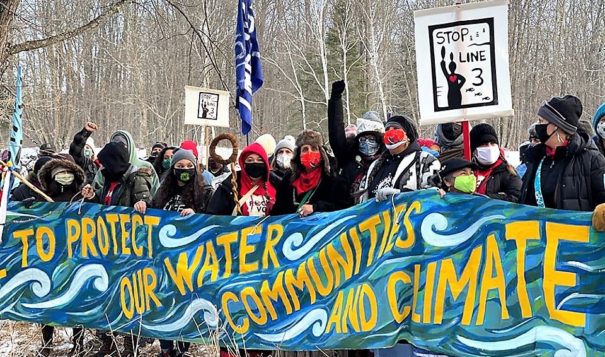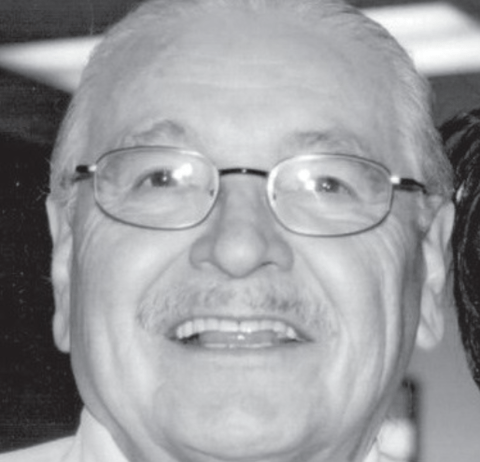Analysis Based on factual reporting, although it Incorporates the expertise of the author/producer and may offer interpretations and conclusions.
It is time for the media to honor the water protectors
 Photo by Sarah Little Redfeather – Honor the Earth Line 3 Movement participants in Minnesota display concerns shared with hazardous oil pipeline resisters from tribes in unceded North and South Dakota treaty territory.
Photo by Sarah Little Redfeather – Honor the Earth Line 3 Movement participants in Minnesota display concerns shared with hazardous oil pipeline resisters from tribes in unceded North and South Dakota treaty territory.
The Lakota people (called the water protectors) deserve credit for stopping the Keystone XL Pipeline.
We started to cover the Keystone XL Pipeline and its predecessor Keystone I in our newspaper, Native Sun News Today, 13 years ago. Our ace reporter Talli Nauman saw the Lakota people’s opposition to it (as the water protectors), and she has been writing news about the resistance to these and other pipelines as it has grown ever since.
South Dakota’s mainstream media didn’t have a clue until Talli began explaining it to them. Because of her journalistic efforts, Native anti-pipeline leadership gained worldwide coverage. And now, along with so many Lakota people in struggle, Talli’s groundbreaking work is vindicated with the Canadian TC Energy Inc. oil giant’s decision to cancel construction. What if she hadn’t insisted on covering more than just the company’s side of the stories? How would the reading public understand this outcome?
Sadly, nearly all of the state media coverage of the cancellation has been totally negligent in following Talli’s example. She always says every story has more than two sides. A newscast on KOTA-TV in Rapid City last week gave only one side of the story, the white man’s side. Even the anchorman on the news, a white guy, said he had talked several people about the cancellation and many of them were upset about the jobs that would be lost. And of course, our three money grubbing representatives in Congress could care less about how the Native Americans feel about it. Gov. Kristi Noem was at least as inconsiderate, having succeeded at convincing the state legislature to approve her bill to stiffen penalties against pipeline fighters.
The only news source in South Dakota that gave credence to the Lakota side of the cancellation story was KELO in Sioux Falls. They allowed an opinion by Cheyenne River Sioux Tribal Chair Harold Frazier to be expressed.
The Lakota people have a strong and legitimate argument. Water is the source of life. If there are ever any threats to our water we need to address them. And that is what the Lakota people have done. It was thepeople’s stubborn standoff with the oil companies that finally caused them to back down. This courageous stand by the Lakota people should be lauded. They stood up for what they believed and yet they also had to shoehorn this side of the story into the national media. What good are all of the new jobs, some lasting as long as six months, if the drinking water is poisoned? You can’t drink oil, and this is exactly what the Lakota people stressed in their objections. They call themselves ”water protectors” not protestors.
NSNT is a small, independent Native American newspaper, and we always try to give all sides of a story.

Some 25 percent of the population west of the Missouri River is Lakota, Dakota and Nakota. We are people who watch and read the news; we shop in the stores of Rapid City; and we buy products like cars, refrigerators, stoves and more in the local markets. Yet we are taken so lightly that we may not even exist in the eyes of the local media.
The Lakota people stopped the pipeline. They beat a major Canadian oil company. The water will remain fresh and drinkable to all South Dakotans because of their stand. Give them the credit they deserve.
(Contact the Editorial Board of Native Sun News Today at editor@nativesunnews.today)

